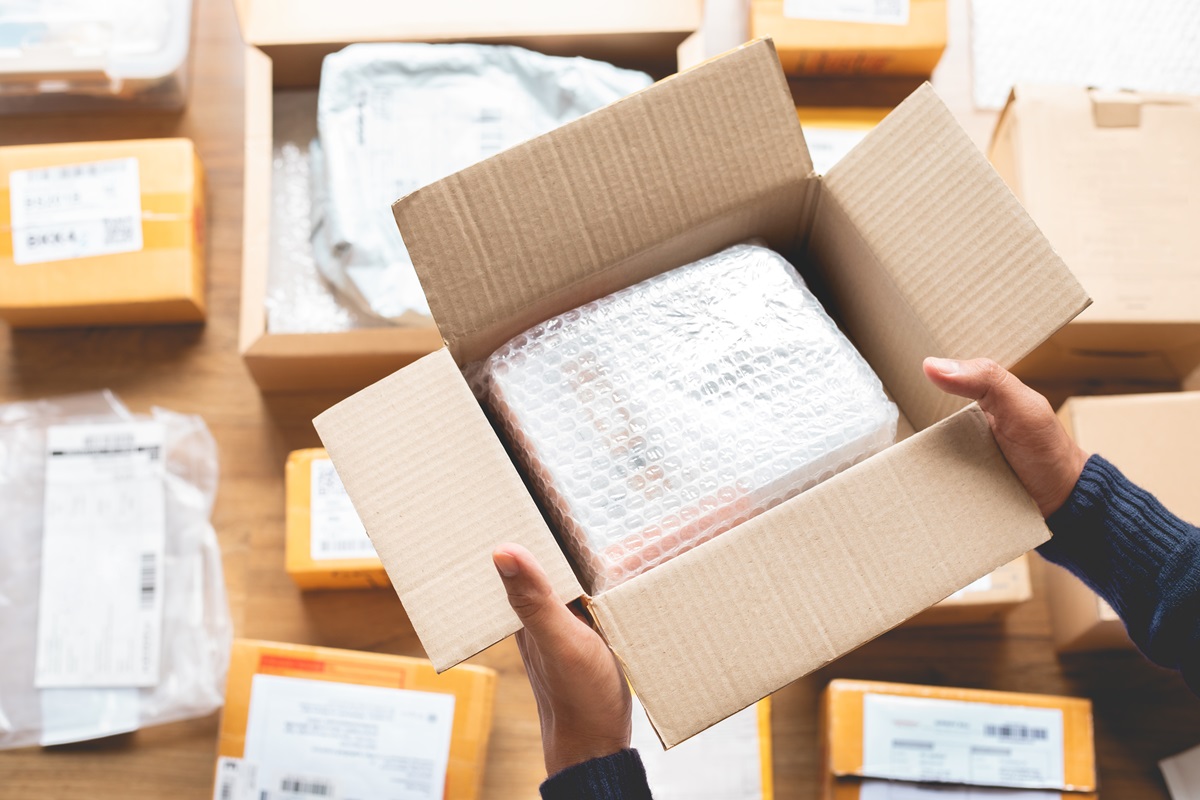A customer-damaged FBA return is one of the many types of Amazon FBA refunds you can get refunded for as an Amazon seller. But itís also the most complicated, because Amazonís terms of service state that sellers arenít eligible...

A customer-damaged FBA return is one of the many types of Amazon FBA refunds you can get refunded for as an Amazon seller.
But itís also the most complicated, because Amazonís terms of service state that sellers arenít eligible for reimbursement when a customer damages the item.
So how can you get reimbursed?
In this guide to customer damaged products, we dive into all of the strategies you need to get reimbursed for as many returns as possible.
Plus, we offer strategies to minimize unsellable inventory.
What counts as a customer damaged FBA return?
A customer-damaged return is any item that canít be immediately placed back into your sellable inventory. Rather, itís considered unsellable inventory because it is not like new and canít be immediately sold to another customer.
The most common type of customer damaged return is when the packaging is damaged but the product itself is fine. Of course, some products are truly damaged by customers, opened, or partially used.
And in other instances, products damaged by the carrier or in the Amazon warehouse are wrongfully deemed to be damaged by the customer. This is a big issue because Amazon is supposed to reimburse you for products they destroy, but you are not eligible for reimbursement if the return was damaged by the customer.
What happens to customer-damaged returns?
Customer-damaged returns should be placed in your unsellable inventory, for which you have to pay storage fees. Becuase youíre paying to store unsellable inventory in Amazonís warehouses, it makes sense to either pay Amazon to destroy the inventory or ship it back to you.
Customer-damaged are sometimes destroyed by Amazon without your permission, making it difficult to analyze the nature of the damage or salvage that inventory for resale.
Amazon Seller policies for customer-damaged FBA returns
Typically, Amazon provides reimbursement for customer-damaged returns if the damage occurred while the item was in Amazonís possession (e.g., at a fulfillment center or during the return process). Sellers may need to follow a specific process, such as providing evidence and opening cases to request reimbursement for eligible situations.
Amazon considers customer damaged returns your liability of doing business. They only take responsibility for what happens in their warehouses or with their carriers, not what customers do to your products. This is part of the terms of service for third-party sellers. This is why the strategy for customer damaged returns is all about discovering returned products that were actually damaged by Amazon or a carrier (not the customer). Returns are commonly miscategorized, and you can get reimbursed when you discover attribution errors.
The step-by-step process for dealing with customer damaged returns
Not sure what to do with customer-damaged returns? Follow this workflow.
1. Choose to have the inventory destroyed or sent back to you
Decide whether to have the damaged inventory destroyed or sent back to you. If the items are low-cost and not worth your time, consider having them destroyed by Amazon. However, for items with potential value, opt to have them shipped back to you.
2. Send ready-to-sale items back to Amazon
For undamaged items mistakenly considered damaged, seize the opportunity to resend them to Amazon. If the items are still in new condition, add them to your future shipments to FBA, ensuring you donít lose out on potential sales.
3. Repackage undamaged items and send them back to Amazon
If you receive items with damaged packaging but the product remains intact, donít write them off. Repackage the undamaged items and send them back to Amazon. This simple step can salvage value from an otherwise compromised situation.
4. Liquidate partially damaged products through other retail channels
While Amazon isnít the right platform for selling lightly damaged or used goods, you can liquidate customer-damaged returns elsewhere.
5. Check customer return reasons and request categorization as carrier damaged or Amazon damaged where applicable
Thoroughly examine customer return reasons. If a customer indicated receiving damaged items, request Amazon to categorize it as carrier damaged and seek reimbursement. Similarly, if the reason is listed as defective, confirm the issue and request credit from your supplier. For returns marked as damaged without a complaint or status, investigate further. Determine if only the packaging is damaged and assess if it can be fixed. Additionally, check if the product has been used or parts are missing, and if so, request an investigation into potential customer abuse of the return process.
6. Request reimbursement for customer return abuse issues
Be proactive in addressing customer return abuse issues. Request reimbursement for instances where customers falsely claim damage or defects.
See the steps and tips below for information on filing claims.
How to get refunded for customer-damaged returns
Navigating the world of returns on Amazon can be a complex journey, especially when dealing with customer-damaged items.
Consider this scenario: several units are returned without the protective shield of an Amazon box. Instead, the shipping label is slapped directly onto the fragile productís packaging, leaving it susceptible to damage during transportation. Or imagine a customer claims a product is defective, only to discover they were simply holding it upside down.
So, how do you go about getting reimbursed for such mishaps?
Especially when Seller Central just shuts these cases down?
Remember that according to their terms of service, Amazon FBA does not reimburse you for items damaged by customers, so you need to get as many returns as possible recategorized as carrier damaged, Amazon damaged, or wrongfully destroyed.
1. Build a solid case
Create†a comprehensive case that includes images of the packing slip, damaged items, packaging, and any LPNs associated with the returns. Scrutinize the packing slips, as they hold key information regarding the status of the returned items.
2. State that you should be reimbursed
In your claim, say specifically that you need to be reimbursed. Create a table with the ASIN, the unitís selling price, and any associated referral and FBA fees. Then calculate the net difference and to show what you should receive for each item, and provide a final total.
3. Be prepared to wait
Be prepared for a potentially prolonged process. Escalation might be necessary, and it could take several weeks to reach a resolution.
4. Highlight packaging issues
Clearly communicate in your case that some items were shipped without proper packaging or not packaged at all. These cases should be specifically escalated to the Fulfillment Center (FC) team responsible for the shipping oversight.
Strategies to reduce customer damaged returns
Dealing with a high volume of customer damaged returns?
Here are some smart strategies to reduce this issue so you can keep more customer returns in your sellable inventory.
1. Accurately categorize your products for safe shipping
Some products that Amazon deems as customer damaged are actually carrier damaged, and the real issue is the packaging. To save money, Amazon ships small standard items in envelopes. This is bad news for posters and other bendable items that could be damaged by being shipped inside an envelope instead of a box. So, you may need to change your product from small standard to large standard (and slightly increase your pricing to account for higher FBA fees) simply to ensure that your product will be shipped in a box, and wonít be damaged as often.
2. Make it easy for customers to open your packaging without ruining it
If your packaging is overly complicated or has thick, sticky tape everywhere, customers will grow impatient and will rip open the box to see whatís inside. If they donít like the product or the item doesnít fit and they return it, Amazon will consider it customer damaged even though the only issue is the packaging.
Make sure itís easy for customers to open items without damaging your packaging so you have a lower rate of customer damaged inventory and Amazon can return more items to your sellable inventory, saving you tons of money on lost product.
3. Bubblewrap items yourself
Fragile-labelled items will be wrapped in bubblewrap in the Amazon warehouse before being sent to a customer, but Amazon employees might not bubblewrap products as carefully and tightly as youíd like. You can individually bubblewrap items yourself before sending them to Amazon to ensure that theyíre perfectly wrapped.
Options for dealing with reimbursement claims
Here are the top options for managing the process of filing reimbursement claims for customer damaged returns and other FBA fee issues:
Track issues and manage claims yourself Ė Regularly review customer return reasons, check products for discrepancies, and file claims. Work with an Amazon-approved reimbursement service Ė Choose an Amazon reimbursement service that is an approved company in Amazon Seller Appstore and that doesnít charge fees upfront. Hire an assistant to deal with Amazon FBA reimbursements Ė Train a virtual assistant or in-person assistant to track customer damages, gather all needed information, and file claims.Partner with the most trusted name in FBA refunds. Learn more about Refunds Manager.
















